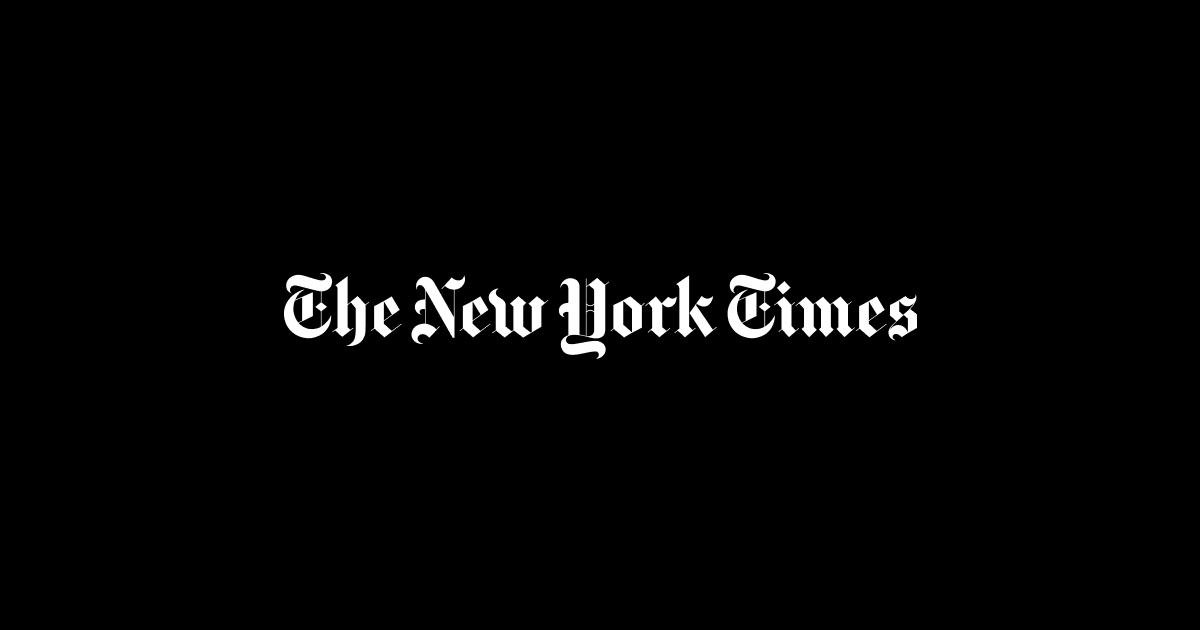January 20, 2024 | by Kaju

With inflation falling, unemployment low and the Federal Reserve signaling it may quickly start reducing rates of interest, forecasters have gotten more and more optimistic that the U.S. financial system may keep away from a recession.
Wells Fargo final week turned the newest massive financial institution to foretell that the financial system will obtain a comfortable touchdown, gently slowing fairly than screeching to a halt. The financial institution’s economists had been forecasting a recession for the reason that center of 2022.
But if forecasters had been unsuitable once they predicted a recession final 12 months, they may very well be unsuitable once more, this time in the other way. The dangers that economists highlighted in 2023 haven’t gone away, and up to date financial information, although nonetheless principally optimistic, has instructed some cracks beneath the floor.
Certainly, on the identical day that Wells Fargo reversed its recession name, its economists additionally revealed a report pointing to indicators of weak spot within the labor market. Hiring has slowed, they famous, and only a handful of industries account for a lot of the latest job positive factors. Layoffs stay low, however employees who do lose their jobs are having a more durable time discovering a brand new one.
“We’re not out of the woods but,” mentioned Sarah Home, an writer of the report. “We nonetheless suppose that recession threat remains to be elevated.”
Ms. Home and different economists have confused that there are good causes for his or her latest optimism. The financial system has weathered the speedy rise in rates of interest significantly better than most forecasters anticipated. And the surprisingly brisk slowdown in inflation has given policymakers extra leeway — if unemployment begins to rise, for instance, the Fed may lower charges to attempt to delay the restoration.
If a recession does arrive, economists say there are three principal ways in which may occur:
1. The Delayed Slowdown
The principle cause that economists predicted a recession final 12 months is that they anticipated the Fed to trigger one.
Fed officers spent the final two years attempting to rein in inflation by elevating rates of interest on the quickest tempo in a long time. The objective was to tamp down demand simply sufficient to carry down inflation, however not a lot that firms would start widespread layoffs. Most forecasters — together with many contained in the central financial institution — thought that such a cautious calibration would show too difficult and that when customers and companies started to drag again, a recession was all however inevitable.
It’s nonetheless doable that their evaluation was proper and that solely the timing was unsuitable. It takes time for the consequences of upper rates of interest to move via the financial system, and there are causes that course of could also be slower than regular this time.
Many firms, for instance, refinanced their debt throughout the interval of ultralow rates of interest in 2020 and 2021; solely when they should refinance once more will they really feel the chew of upper borrowing prices. Many households had been in a position to shrug off larger charges as a result of that they had constructed up financial savings or paid off money owed earlier within the pandemic.
These buffers are eroding, nonetheless. The additional financial savings are dwindling or already gone, in response to most estimates, and bank card borrowing is setting information. Larger mortgage charges have slowed the housing market. Pupil mortgage funds, which had been paused for years throughout the pandemic, have resumed. State and native governments are reducing their budgets as federal help dries up and tax income falls.
“Once you take a look at all of the helps that buyers have had, plenty of these are fading,” mentioned Dana M. Peterson, chief economist for the Convention Board.
The manufacturing and housing sectors have already skilled recessions, with output contracting, Ms. Peterson mentioned, and enterprise funding is lagging extra broadly. Customers are the ultimate pillar holding up the restoration. If the job market weakens even a bit of, she added, “that may wake folks up and get them to suppose, ‘Properly, I’ll not get fired however I would get fired, and at the least I’m not going to get that massive bonus,’” and scale back their spending accordingly.
2. The Return of Inflation
The largest cause economists have change into extra optimistic about the potential for a comfortable touchdown is the speedy cooling of inflation. By some shorter-term measures, inflation is now barely above the Fed’s long-run goal of two %; costs for some bodily items, similar to furnishings and used automobiles, are literally falling.
If inflation is underneath management, that offers policymakers extra room to maneuver, permitting them to chop rates of interest if unemployment begins to rise, for instance. Already, Fed officers have indicated they anticipate to start reducing charges someday this 12 months to maintain the restoration on observe.
But when inflation picks up once more, policymakers may discover themselves in a decent spot, unable to chop charges if the financial system loses momentum. Or worse, they might even be pressured to think about elevating charges once more.
“Regardless of the sturdy demand, we’ve nonetheless had inflation coming down,” mentioned Raghuram Rajan, an economist on the College of Chicago Sales space College of Enterprise who has held high positions on the Worldwide Financial Fund and the Reserve Financial institution of India. “The query now could be, going ahead, are we going to be so fortunate?”
Inflation fell in 2023 partly as a result of the availability aspect of the financial system improved considerably: Provide chains returned largely to regular after the disruptions attributable to the pandemic. The financial system additionally obtained an inflow of employees as immigration rebounded and People returned to the job market. That meant firms may get the supplies and labor they wanted to satisfy demand with out elevating costs as a lot.
Few folks anticipate an identical provide resurgence in 2024, nonetheless. That signifies that for inflation to maintain falling, it might require a slowdown in demand. That may very well be very true within the service sector, the place costs are usually extra tightly tied to wages — and the place wage progress has remained comparatively sturdy due to the demand for employees.
Monetary markets may be making the Fed’s job harder. The inventory and bond markets each rallied late final 12 months, which may successfully cancel out a number of the Fed’s efforts by making buyers really feel richer and permitting companies to borrow extra cheaply. That might assist the financial system within the quick time period, however pressure the Fed to behave extra aggressively, elevating the chance that it’ll trigger a recession down the street.
“If we don’t preserve sufficiently tight monetary circumstances, there’s a threat that inflation will choose again up and reverse the progress we’ve made,” Lorie Okay. Logan, the president of the Federal Reserve Financial institution of Dallas, warned this month in a speech at an annual convention for economists in San Antonio. Consequently, she mentioned, the Fed ought to go away open the potential for one other enhance in rates of interest.
3. The Unwelcome Shock
The financial system caught some fortunate breaks final 12 months. China’s weak restoration helped preserve commodity costs in verify, which contributed to the slowdown in U.S. inflation. Congress averted a authorities shutdown and resolved a debt-ceiling standoff with comparatively little drama. The breakout of conflict within the Center East had solely a modest impact on world oil costs.
There isn’t a assure that luck will proceed in 2024. The widening conflict within the Center East is disrupting delivery lanes within the Purple Sea. Congress will face one other government-funding deadline in March after passing a stopgap spending invoice on Thursday. And new threats may emerge: a extra lethal coronavirus pressure, battle within the Taiwan Strait, a disaster in some beforehand obscure nook of the monetary system.
Any of these prospects may upset the stability that the Fed is attempting to strike by inflicting a spike in inflation or a collapse in demand — or each without delay.
“That’s the factor that, should you’re a central banker, retains you up at night time,” mentioned Karen Dynan, a Harvard economist and former official within the Treasury Division.
Though such dangers all the time exist, the Fed has little margin for error. The financial system has slowed considerably, leaving much less of a buffer within the occasion of an extra hit to progress. However with inflation nonetheless elevated — and recollections of excessive inflation nonetheless recent — the Fed may have a tough time ignoring even a short lived spike in costs.
“There’s room for a mistake on each side that will find yourself creating job loss,” Ms. Dynan mentioned. “The dangers are extra balanced, actually, than they had been a 12 months in the past, however I don’t suppose that’s offering that rather more consolation to the choice makers.”
Audio produced by Patricia Sulbarán.
RELATED POSTS
View all


